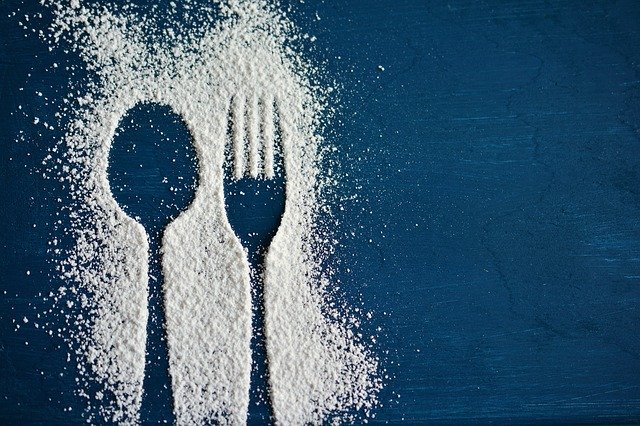Ever wonder why we like sugar so much? Well, it seems we can blame our sweet tooth on our primate ancestors, who, millions of years ago, survived on sugar-rich fruit. They evolved to like riper fruit because it had a higher sugar content than unripe fruit and therefore, supplied more energy.
For millions of years, our cravings and digestive systems were perfectly balanced because sugar was an extremely rare commodity. Apart from honey, most of the foods our hunter-gatherer ancestors ate were no sweeter than a carrot. And when our instincts tell us to binge on the nutritional equivalent of a carrot whenever we happened to stumble across one, weight gain was not a real risk back then. Drinking sugar rich beverages several times a day is, of course, a different story.
To disperse their seeds more efficiently and over a greater distance, plants needed animals to eat

their fruit. In cases where the animal swallowed the seeds, the seeds are deposited some distance away from the parent plant along with some “fertilizer” to help the seed grow. The risk for the plant is that the animal eats the fruit too early and the seeds are not yet ready to germinate by themselves. The colour change in fruits coincides with the timing of the development of the seeds and is the signal that the fruit is ready to be eaten. Most plants have developed a way to be sure that animals pay attention to this signal by keeping the sugars that animals want, in the form of acids, until the fruit is ripe.
So, it was no coincidence that about 30 million years ago a mutation that provided our primate ancestors with the so-called trichromatic colour vision, the way we see colours today, gave primates a selective advantage. It allowed them to better distinguish ripe from unripe fruits and green foliage. As fruit is a critical part of the diet of many primates, fruit-detection qualifies as selection pressure.
But then another mutation happened some 15 million years ago. During a time of global cooling, our earliest ancestors went through a period of significant starvation. And around that time, a mutation occurred that increased the apelike creatures’ sensitivity to fructose so that even small amounts were stored as fat. When we eat table sugar, our bodies break this down into glucose and fructose, which are then metabolized differently. In humans, triglycerides, which are a type of fat in the blood, are mostly formed in the liver. And the liver acts like “a traffic cop” who coordinates how the body uses dietary sugars. When the liver encounters glucose, it decides whether the body needs to store it, burn it for energy or turn it into triglycerides. But when fructose enters the body, it bypasses the process and ends up being quickly converted to body fat.
Hunting is significantly less reliable than a drive-through, so at a time when food was scarce and
meals inconsistent, hanging on to fat was an advantage, not a health risk. This adaptation was a survival mechanism: if you eat fructose you decrease the likelihood you will starve to death.
But the sweet taste had other effects as well. In the brain, sugar stimulates the “feel-good” chemical dopamine. Also, this makes sense from an evolutionary perspective, since our hunter-gatherer ancestors who are “hooked” on sugar, probably had a better chance of survival. Imagine you’re living in the Palaeolithic era, and you hated sugar, then you probably wouldn’t eat enough sugar, have enough energy and wouldn’t have children.
In short: because our prehistoric ancestors faced so many food challenges, it now means that biologically, we have evolved to crave sweets. Many millennia later, with the invention of farming, starchy foods became much more abundant, but it wasn’t until recently that pure sugar became bountiful. The problem with that is that our bodies are just not adapted to the amount of sugar they are ingesting, leading to overweight and obesity. So, here are some tips in case you’re having another attack of these prehistoric cravings:
- Potato chips: replace with a salty snack that is higher in healthy fats and protein, (e.g. cashews and walnuts). Popcorn is also a good replacement.
- Chocolate: may indicate a need for magnesium, to be satisfied with magnesium-rich foods, (e.g. almonds). If nothing but chocolate will do, opt for dark (at least 70 percent cocoa).
- Candy or pastries: To be satisfied with whole fruits. Keeping dried fruits on hand may also be helpful for combatting cravings on the go.
- Soda: replace with sparkling water with a squeeze of fruit juice or a slice of orange.
- Cheese: buy low-fat and low-sodium cheeses.













